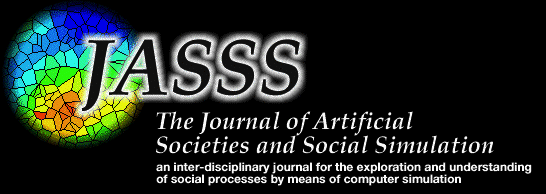|
Authors
Edmonds, B.; Le Page, C.; Bithell, M.; Chattoe-Brown, E.; Grimm, V.; Meyer, R.; Montañola-Sales, C. ; Ormerod, P.; Rooti, H.; Squazzoni, F. ; Ormerod, P.; Rooti, H.; Squazzoni, F.
|
Abstract
How one builds, checks, validates and interprets a model depends on its ‘purpose’. This is true even if the same model code is used for different purposes. This means that a model built for one purpose but then used for another needs to be re-justified for the new purpose and this will probably mean it also has to be re-checked, re-validated and maybe even re-built in a different way. Here we review some of the different purposes for a simulation model of complex social phenomena, focusing on seven in particular: prediction, explanation, description, theoretical exploration, illustration, analogy, and social interaction. The paper looks at some of the implications in terms of the ways in which the intended purpose might fail. This analysis motivates some of the ways in which these ‘dangers’ might be avoided or mitigated. It also looks at the ways that a confusion of modelling purposes can fatally weaken modelling projects, whilst giving a false sense of their quality. These distinctions clarify some previous debates as to the best modelling strategy (e.g. KISS and KIDS). The paper ends with a plea for modellers to be clear concerning which purpose they are justifying their model against.
|

WoS
Scopus
Altmetrics
  
|
